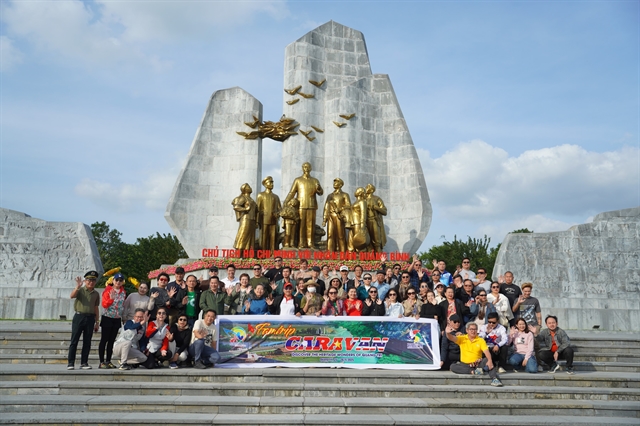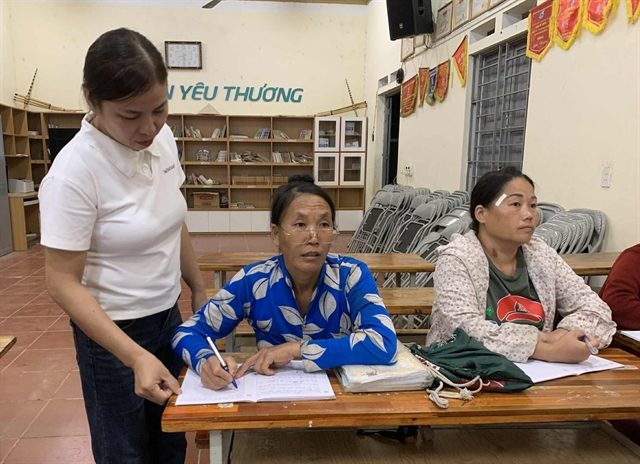 Life & Style
Life & Style

 |
| Underwater photographer Nguyễn Ngọc Thiện. Photo Nguyễn Ngọc Thiện |
Award-winning photographer Nguyễn Ngọc Thiện is among the few Vietnamese artists working underwater, combining diving expertise with a sharp visual eye to document marine life in some of the country’s most fragile ecosystems. He has received major international recognition including the Winner's Award for Ocean Photographer of the Year 2024 and the Winner's Award for Underwater Photography at the 35AWARDS International Photography Awards 2023.
Most recently, his collection capturing a giant Bryde’s whale hunting in the Nhơn Lý coastal waters of Gia Lai Province claimed two top honours in the 2025 Heritage Photographic Contest – Journey of Heritage. Thiện’s works have appeared in National Geographic, the World Wide Fund for Nature (WWF) and Oceanographic magazine, as well as major international news outlets including CNN, BBC, Forbes, The Guardian, and the Daily Mail.
Thiện spoke to the media about his passion for travel and underwater photographs.
Could you tell us about the moment when you snapped the award-winning photo collection about the Bryde's whale?
At dawn on Sunday, July 6, we set out with local fishermen, following reports of a Bryde’s whale spotted near the sacred coast of Nhơn Lý, right in front of Nam Hải Whale Temple and Phước Sa Pagoda.
Around 5.30am, thousands of swallows filled the sky, a sign locals say indicates that baitfish are near and the whale is not far behind. For a few brief moments, a plume of water broke the surface. The whale appeared, breaching, circling and feeding, then quietly slipped back into the blue after just 15-20 minutes.
But around 3pm, it returned. This time, it stayed for hours, rising and diving in the golden light as if the sea itself was breathing with it.
For the people here, the whale, or 'cá Ông,' is more than a whale, it is considered a guardian spirit of the sea. For us, this was not just an ocean expedition, but a rare, meaningful moment where nature revealed its quiet magic, right in our own homeland.
What inspired you to challenge yourself and explore the ocean?
After graduating with a degree in Automation Engineering from HCM City University of Technology, I took up photography to relax after work and to balance my technical career.
In 2017, I joined National Geographic Magazine's international photography community. I had the opportunity to connect and learn, and I was inspired by talented photographers around the world.
One of them is Paul Nicklen, a marine conservationist and National Geographic wildlife photographer. He is also co-founder of the marine protection organisation SeaLegacy.
I am also a fan of Sir David Attenborough, a veteran broadcaster and naturalist. He is also a legend in international television with the series Planet Earth and Blue Planet.
With a strong desire to capture the diverse beauty of the ocean, I decided to pursue underwater photography at the end of 2018.
Underwater photography is still new in Việt Nam. What is the most difficult thing about shooting underwater?
When I began shooting underwater, I found that there seemed to be no underwater photographers in Việt Nam. There was no information available in Vietnamese, so I had to search for English-language sources and learn from international forums on the web.
I taught myself to dive and studied underwater photography equipment. Underwater scenes are incredibly difficult to shoot. Every step must be slower and it is much riskier than taking photos on land.
The prerequisite for being able to shoot underwater is having really good diving skills, whether scuba diving or free diving. You must master diving skills to ensure absolute safety for yourself in harsh environments such as the open sea.
If you cannot control your breathing, pressure, buoyancy or reaction to an incident underwater, you will not be able to concentrate on shooting.
Underwater photography is an advanced form of photography. Natural light is refracted, colours are altered and visibility is limited, making control of composition, sharpness, lighting and colour extremely challenging.
This requires the photographer to already have a strong foundation in traditional photography before attempting underwater photography.
Equipment is also important and requires a major investment. You need camera equipment, specialised lenses, waterproof housing and high-quality domes, as well as other specialised supporting equipment which is expensive and mostly has to be ordered from abroad.
Could you tell us what you have seen with your own eyes in the sea?
Việt Nam has more than 3,000km of coastline from the north to the south with islands and archipelagos, beautiful beaches and natural landscapes. It has advantages for the development of sea tourism and is in no way inferior to other nations in the region.
However, tourism activities often focus only on beaches, resorts and landscapes above the sea. Meanwhile, there are challenges and limitations in protecting the marine environment.
Overfishing has been widely recognised as a direct pressure and major risk to marine environments and ocean health. In addition, there are few effective and well-managed marine reserves associated with underwater tourism.
I see that Vietnam's marine tourism sector has not yet fully developed diving activities for ocean exploration.
Has it changed your thoughts on underwater photography?
Personally, I find that it is necessary to convey the message of a sustainable lifestyle with nature and the ocean through photography. I hope this can draw public attention and raise awareness of a balanced lifestyle with nature in a symbiotic relationship that does not harm ecosystems, including marine ecosystems.
Since 2019, I have continued my journey to explore and document the ocean world. Fortunately, I have witnessed and observed many things in Vietnamese seas and around the world. Some of my works have also been featured in domestic and foreign media channels. — VNS